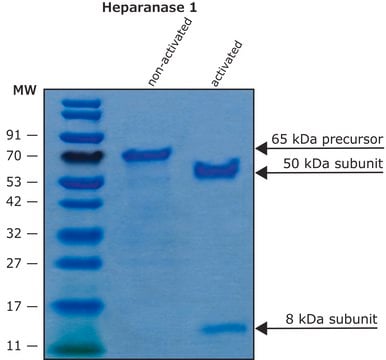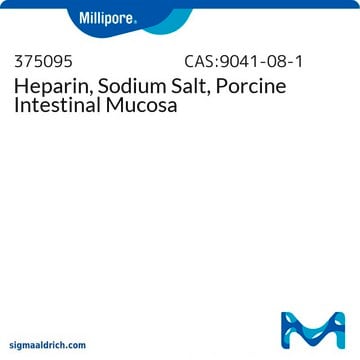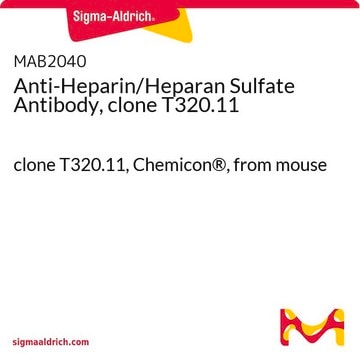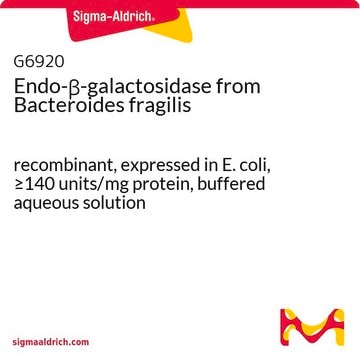This product may be reconstituted at 1 mg/mL in Tris-HCl, pH 7.5, containing 50 mM NaCl, 4 mM CaCl2, and 0.01% BSA. The solutio is stable for at least one week at -20 °C or 3 months at 70 °C. Please see the link below to review the product datasheet:
https://www.sigmaaldrich.com/deepweb/assets/sigmaaldrich/product/documents/215/379/h2519pis-ms.pdf
H2519
Heparinase I from Flavobacterium heparinum
Lyophilized powder stabilized with approx. 25% bovine serum albumin, ≥200 units/mg protein (enzyme + BSA)
Synonym(s):
Heparin lyase I, Heparinase
About This Item
Recommended Products
conjugate
conjugate (Glucosaminoglycan)
Quality Level
form
lyophilized solid
specific activity
≥200 units/mg protein (enzyme + BSA)
mol wt
42.8 kDa
application(s)
diagnostic assay manufacturing
storage temp.
−20°C
Looking for similar products? Visit Product Comparison Guide
Related Categories
Application
Biochem/physiol Actions
Unit Definition
Other Notes
Signal Word
Danger
Hazard Statements
Precautionary Statements
Hazard Classifications
Resp. Sens. 1
Storage Class Code
11 - Combustible Solids
WGK
WGK 3
Flash Point(F)
Not applicable
Flash Point(C)
Not applicable
Personal Protective Equipment
Choose from one of the most recent versions:
Certificates of Analysis (COA)
Don't see the Right Version?
If you require a particular version, you can look up a specific certificate by the Lot or Batch number.
Already Own This Product?
Find documentation for the products that you have recently purchased in the Document Library.
Customers Also Viewed
Articles
Uncover more about glycosaminoglycans and proteoglycans including the structure of glycosaminoglycans (GAGs), the different types of GAGs, and their functions.
Uncover more about glycosaminoglycans and proteoglycans including the structure of glycosaminoglycans (GAGs), the different types of GAGs, and their functions.
Uncover more about glycosaminoglycans and proteoglycans including the structure of glycosaminoglycans (GAGs), the different types of GAGs, and their functions.
Uncover more about glycosaminoglycans and proteoglycans including the structure of glycosaminoglycans (GAGs), the different types of GAGs, and their functions.
-
How to reconstitute and how to save after reconstituting?
1 answer-
Helpful?
-
Active Filters
Our team of scientists has experience in all areas of research including Life Science, Material Science, Chemical Synthesis, Chromatography, Analytical and many others.
Contact Technical Service













